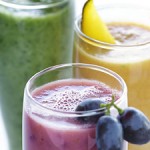Westchester Food Bank Mindfulness Talk
Rye Brook doctor provides food-focused health care
Come Together – The Value of Creating Community
 In the spirit of community, we are having our One-Day Mindfulness Retreat that I will be leading with Elizabeth Greig, FNP. It’s a wonderful way to come together and experience the supportive community that we have created here at Blum Center for Health. While I am on vacation in Asia, I am handing off the reigns to Darcy McConnell, MD.
In the spirit of community, we are having our One-Day Mindfulness Retreat that I will be leading with Elizabeth Greig, FNP. It’s a wonderful way to come together and experience the supportive community that we have created here at Blum Center for Health. While I am on vacation in Asia, I am handing off the reigns to Darcy McConnell, MD.

Have you ever attempted to make a big lifestyle change alone? Of course you can, but to ensure your success, we encourage you to not go it alone. Having the support of your community – friends, family, and colleagues – has proven positive health outcomes.
Here at Blum Center we believe that real and lasting change in behavior is necessary to achieve the goal of feeling better and getting well. There are old habits to be broken and new habits to be ingrained. Social connectedness not only helps you achieve your health goals, but is also linked to improved heart health, decreased inflammation, and less depression and anxiety. This is true for one-on-one relationships like marriage and friendship, as well as for social relationships such as at work, school, or in a religious community.
Simply having social connection in and of itself leads to a healthier life, but research shows that better health outcomes are achieved when coming together in groups. For instance, support groups for exercise (e.g., walking), weight loss (both medically supervised and commercial), and illness support groups (for anxiety, cancer, or autoimmune disease) have a powerful effect on mental and physical health. And there is even evidence to suggest that joining a health support group with a friend increases the likelihood of continued adherence to a lifestyle program long after the group meetings end.
Bottom line: Sharing a lifestyle changing experience with a partner, your family, or a group will lead to improved outcomes and overall better health. So nourish your connections and use them to help you grow and be successful.
This philosophy is the reason Blum Center for Health offers a variety of ways to come together in shared community. We provide a safe environment to meet up and share experiences with others as you navigate these sometimes challenging lifestyle changes. Some groups, like our ongoing mind-body groups and weight loss groups, meet more than once, allowing the members to get to know one another more deeply. While other programs like our cooking classes, Learn at Lunch, and weekly meditation groups, allow you to meet an ever-changing array of like-minded people looking to share and connect.
If you are not in our area, we encourage you to sign up for our free Do It With Us! online programs that correlate to Dr. Blum’s book, The Immune System Recovery Plan. It’s a great resource that provides you with added support and valuable information as you work toward your goal of healthful living. To further expand your support community, look for a meditation group or yoga classes near you.
Nurture your social connections – it’s really good for you!
The Family Dinner
 There is no doubt that a feeling of connection benefits both your physical and emotional health. And the connection begins at home. Having positive family ties affects your well-being and is the foundation for social connectedness.
There is no doubt that a feeling of connection benefits both your physical and emotional health. And the connection begins at home. Having positive family ties affects your well-being and is the foundation for social connectedness.
Today, families often eat on-the-go, causing digestion, nutrition, and relationships to suffer. The family dinner that numerous studies show is amazing for your family is mainly absent.
Take the time to rekindle this beneficial yet forgotten custom, even if it just once a week. Family dinners are a great time to connect, teach cultural traditions, and provide good nutrition. Instill in your children the dynamics of healthy teamwork by creating an atmosphere of trust and acceptance in the kitchen and at the table. Whether in harmony or in conflict, cook, eat, and cleanup together.
If you are following a specific food plan, let your children experience it – plan a meal where they participate in the preparation and explain the importance of what you are eating and why.
The family dinner needs to be healthy – but it does not always have to be homemade.Organic Pharmer offers an array of incredibly delicious and nutritious prepared foods to choose from. To make the dinner special, take the food out of the containers and place it in nice bowls before serving. To keep the conversation going, try a simple dessert that keeps everyone at the table longer. This month’s recipe is one that your entire family can create and enjoy together.
At a loss for what to cook? Be inspired to try new and wonderful recipe ideas by exploring the many creative hands-on cooking classes and cooking demos offered at Blum Center. Participate alone, or better still, bring your spouse, a child, or a friend, and enjoy the experience together.
Remember: Cook, eat, and cleanup together – as often as you can. Your health and your relationships will flourish!
Check out our class calendar to learn more about our cooking class dates and times.
Apple Crisp
Boost Your Meditation Power
 What’s better than a daily meditation practice in your own meditation space every day? Meditating with a group of meditators every day! Or at least on a regular basis. Having personally participated in meditations under both circumstances–by myself and with other people–I can attest to the fact that meditating with others makes it easier to stay put for the specified length of the meditation and often gives me a deeper experience. Because it makes a palpable difference in my daily practice, I take advantage of group meditation as often as I can.
What’s better than a daily meditation practice in your own meditation space every day? Meditating with a group of meditators every day! Or at least on a regular basis. Having personally participated in meditations under both circumstances–by myself and with other people–I can attest to the fact that meditating with others makes it easier to stay put for the specified length of the meditation and often gives me a deeper experience. Because it makes a palpable difference in my daily practice, I take advantage of group meditation as often as I can.
Finding a community of meditators that supports your personal practice is easier than you think! Blum Center for Health offers guided meditations up to twice a week. It’s the perfect opportunity to sit with others who have a similar focus on the mind-body connection. Both Apple and Android have a meditation app called Insight Timer that allows you to see who else is meditating right now, so you can feel a connection to other meditators both locally and around the world. The app also has several groups of meditators that you can join online, for example, Women Meditate Worldwide and Daily Gratitude. You can find local meditation groups to join in person through this app, too.
So even though meditation is about your own inner experience, doing the practice as part of a community can definitely give your personal practice an energy boost. We warmly invite you to join our Blum Center meditations every other Tuesday and every Friday for an experience of community meditation. And please join Dr. Blum and me for the next One-Day Mindfulness Retreat on Saturday, March 21, in which we will teach practical self care skills in a relaxing small group setting.
Visit our class calendar to learn more about our mind body spirit class dates and times.
Can You Ever Eat Gluten Again?
In case you missed The Dr. Oz Show yesterday, Dr. Blum discusses that there’s hope for those of you who are gluten sensitive.
The show focuses on gluten sensitive people without celiac or autoimmune disease. For those with autoimmune issues, Dr. Blum still recommends following a gluten free diet and the steps in her book, The Immune System Recovery Plan.
Love Your Hormones!
 If you are like most women over 45 who come to my office, you probably noticed that the old desire isn’t burning as brightly as it once was. Why is that? Is it something you just have to accept? The answer is NO! There are many reasons why your libido has gotten sidetracked. A major culprit is stress. We all know that stress makes us, well, stressed. But how does this affect your sex drive?
If you are like most women over 45 who come to my office, you probably noticed that the old desire isn’t burning as brightly as it once was. Why is that? Is it something you just have to accept? The answer is NO! There are many reasons why your libido has gotten sidetracked. A major culprit is stress. We all know that stress makes us, well, stressed. But how does this affect your sex drive?
If you have been overwhelmed for a long time, chances your adrenal glands, the organ that makes cortisol (your stress hormone) are tired. The adrenal glands also make testosterone, one of your sex hormones. After age 45 (especially after menopause), the stress has not only drained away your energy, but your testosterone as well, results in a sluggish libido. Your sex drive is made up of many parts, and testosterone is one of them. What to do? Get an adrenal saliva test and a blood test for your DHEA and testosterone levels. If I find that your hormones are low, I make the following 3 suggestions:
- DHEA: Take DHEA to support testosterone production, since DHEA is converted to testosterone in your adrenal glands. You should not take DHEA without having your DHEA-S levels checked, or if you have a history of breast cancer, since DHEA can also be converted to estrogen. For most women, however, this is a good thing and will support all of your hormones. The usual starting dose is 25 mg. DHEA-S and testosterone levels in your blood are checked after 3 months, then every 6 months.
- FLAX SEED: Eat 2 tablespoons of ground flax seed every day. Sprinkle it on your cereal, mix it in your smoothie or yogurt. Ground flax is an aromatase inhibitor, which is important since aromatase is an enzyme that converts testosterone to estrogen in your cells. Your testosterone might be low because your aromatase is on overdrive, and so blocking this enzyme is a libido booster.
- ADRENAL SUPPORT: Work on healing your adrenal glands. This means getting a better night’s sleep, at least 7 hours; eating a whole foods diet with little sugar and white flour; and not skipping meals (don’t go more than 4 hours without eating). Exercise is very important too, as is a relaxation or meditation practice every day.
Eat Your Way to Sexy

 It’s no surprise that a healthy diet can make you feel good inside and out. But there are also many super foods that can help turn on the libido. The right foods can support the adrenals, turn on sex hormones, and stimulate the excitement and satisfaction centers in your brain.
It’s no surprise that a healthy diet can make you feel good inside and out. But there are also many super foods that can help turn on the libido. The right foods can support the adrenals, turn on sex hormones, and stimulate the excitement and satisfaction centers in your brain.
- Asparagus
- Avocado
- Chili Peppers
- Flax Seeds
- Garlic
- Maca
- Oysters
- Raw Cacao
- Pumpkin Seeds
- Watermelon

